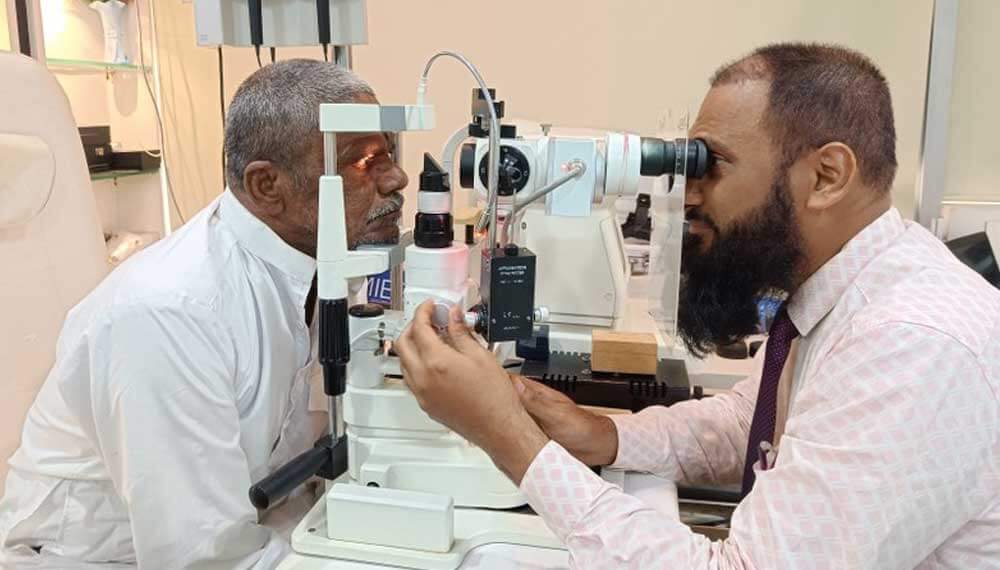Cataract Causes, Treatment,
Surgery Options & Costs
Cataracts are one of the leading causes of vision impairment, especially among older adults. Fortunately, modern medicine has made cataract treatment highly effective and safe.
What is cataract? What are the treatment options?, What is a lens implant for cataract patients?, and what you need to know about cataract surgery, its costs, benefits, and risks.
What is a Cataract?
A cataract is a clouding of the eye’s natural lens, which lies behind the iris and the pupil. Most cataracts are age-related, typically developing after the age of 40, but they can also be caused by eye injuries, diseases like diabetes, or long-term exposure to sunlight.
Common symptoms of cataracts include:
- Blurry or cloudy vision
- Difficulty seeing at night
- Faded colors
- Sensitivity to light and glare
- Frequent changes in eyeglass or contact lens prescriptions
Treatment of Cataracts
When symptoms first appear, vision may be improved with glasses, magnifying lenses, or better lighting. However, cataract surgery is the only effective treatment to restore clear vision once the cataract progresses and significantly affects daily life.

Non-surgical treatment options can only provide temporary relief, but they cannot reverse the cataract.
Lens Implant for Cataract Patients
During cataract surgery, the clouded lens is removed and replaced with an artificial lens, called an intraocular lens (IOL). This lens implant helps restore focusing power to the eye.
Types of lens implants include:
- Monofocal lenses – Provide clear vision at one distance (usually far)
- Multifocal lenses – Help you see both near and far
- Toric lenses – Designed to correct astigmatism
- Accommodative lenses – Shift focus from near to far based on eye muscle movement
Your eye surgeon will recommend the best type of IOL based on your lifestyle and vision needs.
Types of Intraocular Lenses (IOLs)
1. Monofocal IOLs
- Function: Designed to provide clear vision at one distance—either near, intermediate, or far (typically set for distance).
- Ideal for: People who don’t mind wearing glasses for reading or close-up tasks.
- Pros: Most commonly used and fully covered by insurance in many cases.
- Cons: You’ll likely need reading glasses.
2. Multifocal IOLs
- Function: Provide vision at multiple distances—near, intermediate, and far.
- Ideal for: Those who want to reduce or eliminate the need for glasses after surgery.
- Pros: Offers more visual freedom.
- Cons: May cause glare or halos, especially at night. Not covered by insurance.
3. Toric IOLs
- Function: Correct astigmatism (a common irregularity in corneal shape).
- Ideal for: People with significant astigmatism.
- Pros: Reduces the need for glasses post-surgery.
- Cons: May still need reading glasses; higher cost and may not be fully covered by insurance.
4. Accommodative IOLs
- Function: Designed to move or flex inside the eye to allow focusing at different distances, similar to the natural lens.
- Ideal for: Active individuals looking for a full range of vision.
- Pros: Can reduce dependence on glasses.
- Cons: May not be as effective at near vision as multifocal lenses.
5. Extended Depth of Focus (EDOF) IOLs
- Function: Create a continuous range of vision, especially improving intermediate and distance vision.
- Ideal for: People who want good vision for computer use, driving, and possibly reading.
- Pros: Fewer visual disturbances than multifocal IOLs.
Cons: May still require reading glasses for small print.

How to Choose the Right Lens Implant
Choosing the best lens implant depends on:
- Your lifestyle (e.g., reading, computer work, driving)
- Whether you have astigmatism
- Your budget and insurance coverage
- How much you want to reduce dependency on glasses
Your eye surgeon will help recommend the ideal IOL based on a comprehensive eye exam and your vision goals.
Benefits & Risks of Cataract Surgery
Benefits of Cataract Surgery:
- Significantly improved vision
- Brighter and clearer vision
- Better color perception
- Quick recovery (most patients return to normal activities within a few days)
- Long-lasting results
Risks of Cataract Surgery:
While cataract surgery is among the safest and most common procedures worldwide, potential risks include:
- Infection
- Swelling or bleeding
- Retinal detachment (rare)
- Secondary cataract (clouding of the artificial lens)
These complications are rare, especially when the surgery is performed by an experienced ophthalmologist.
Cost of Cataract Surgery
The cost of cataract surgery depends on several factors, including the type of lens chosen, the surgeon’s experience, and the location of the clinic.
Average Cataract Surgery Cost:
- Standard cataract surgery (with monofocal lens)
- Premium lens surgery (multifocal or toric lenses)
Many insurance plans, cover basic cataract surgery with standard lenses. Premium lenses or laser-assisted surgeries may incur out-of-pocket costs.
If you’re experiencing symptoms like cloudy vision, glare, or trouble seeing at night, it’s essential to consult an eye specialist. Cataracts are highly treatable, and with modern cataract surgery, you can restore clear vision safely and effectively.
Whether you’re concerned about the cost of cataract surgery, curious about lens implants, or want to understand the benefits and risks, staying informed will help you make the best decision for your eye health.

